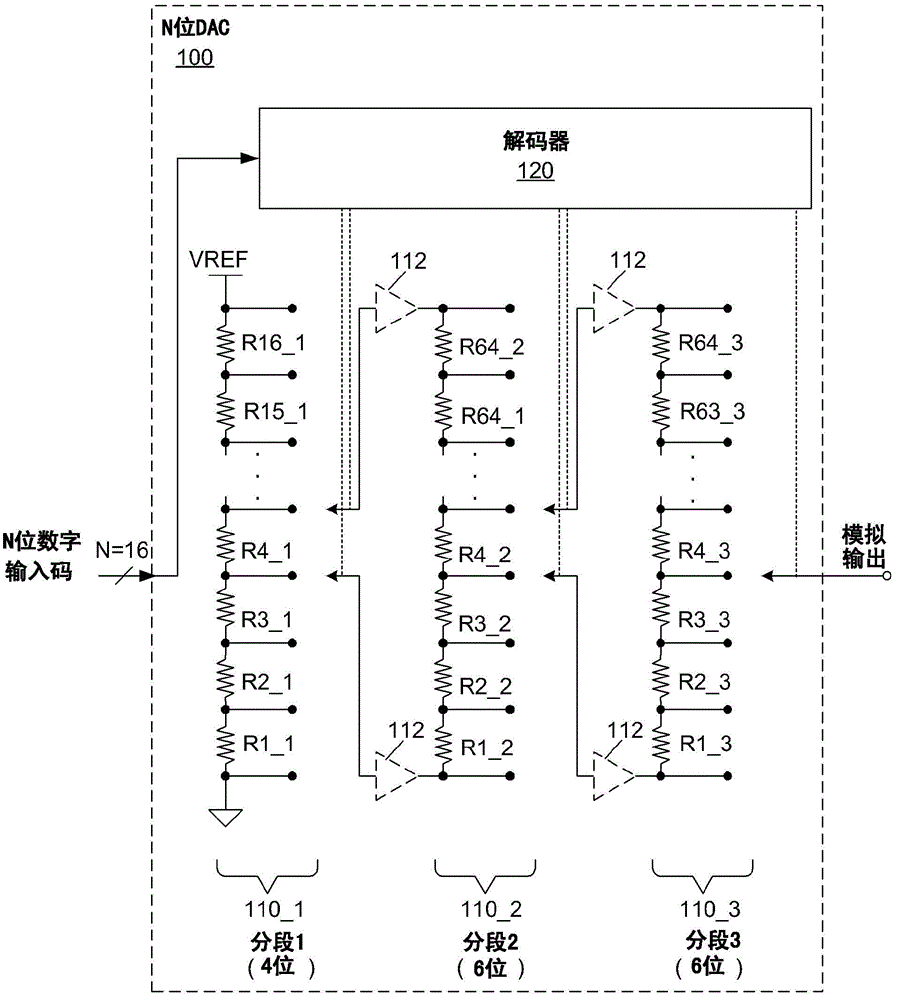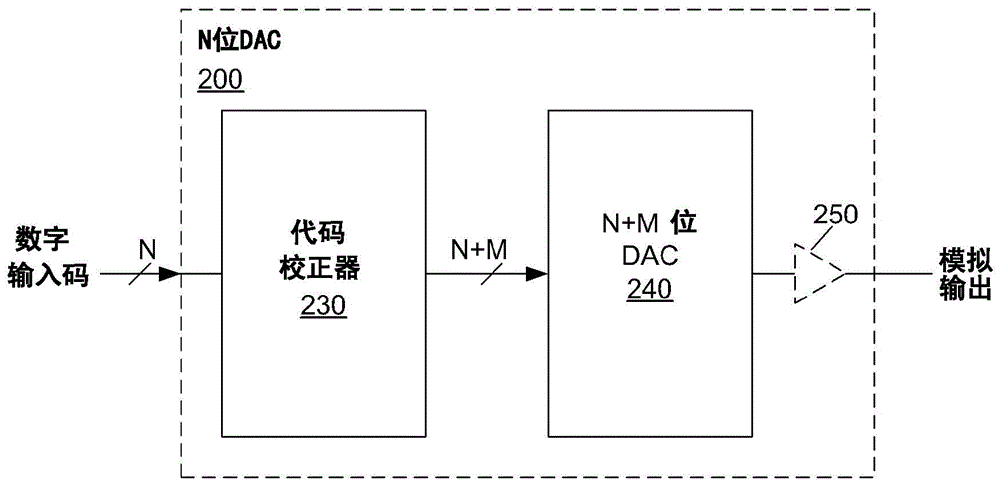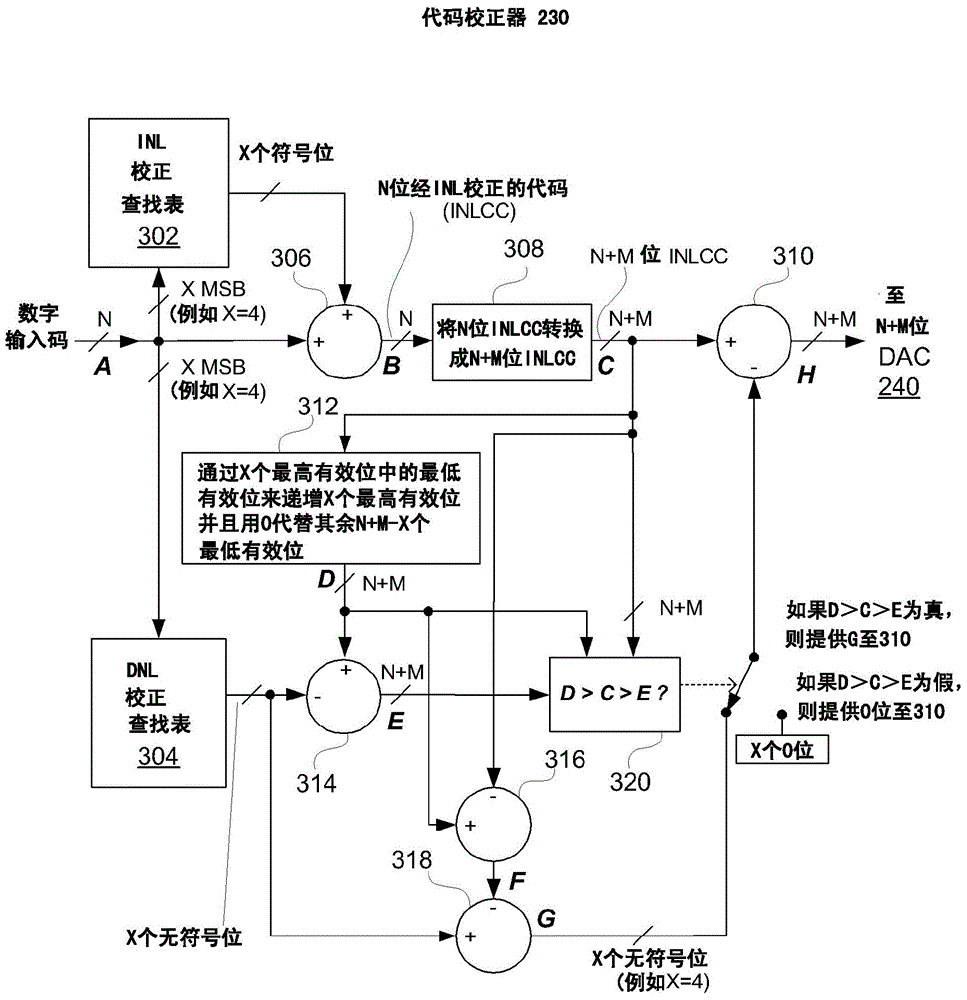Integrated non-linearity (INL) and differential non-linearity (DNL) correction techniques for digital-to-analog converters (DACS)
A technology of digital-to-analog converter and integral nonlinearity, which is applied in digital-to-analog converter, analog/digital conversion calibration/test, analog/digital conversion, etc.
- Summary
- Abstract
- Description
- Claims
- Application Information
AI Technical Summary
Problems solved by technology
Method used
Image
Examples
Embodiment Construction
[0035] For INL correction, various techniques for reducing the effect of INL can be used, resulting in different trade-offs as they involve computational requirements and on-chip storage. As described in more detail below, in one embodiment, the most efficient segment of the DAC (e.g., figure 1 Each sub-segment of the middle segment 110_1) (except the end sub-segment, which is used to eliminate the unintentional gain error caused by INL correction) determines a correction code. Various correction techniques can be used including, but not limited to, zero-order correction (essentially INL offset correction), or first-order correction (linear fit between major inflection points in the INL curve).
[0036] Particular embodiments of the present invention relate to systems, devices, and methods that use a look-up table to reduce the INL of a DAC without modifying the DAC output voltage range, while still providing a monotonic DAC. In some embodiments, the size of the lookup table...
PUM
 Login to View More
Login to View More Abstract
Description
Claims
Application Information
 Login to View More
Login to View More - R&D
- Intellectual Property
- Life Sciences
- Materials
- Tech Scout
- Unparalleled Data Quality
- Higher Quality Content
- 60% Fewer Hallucinations
Browse by: Latest US Patents, China's latest patents, Technical Efficacy Thesaurus, Application Domain, Technology Topic, Popular Technical Reports.
© 2025 PatSnap. All rights reserved.Legal|Privacy policy|Modern Slavery Act Transparency Statement|Sitemap|About US| Contact US: help@patsnap.com



